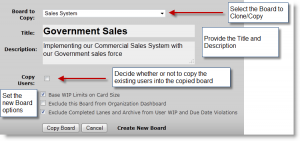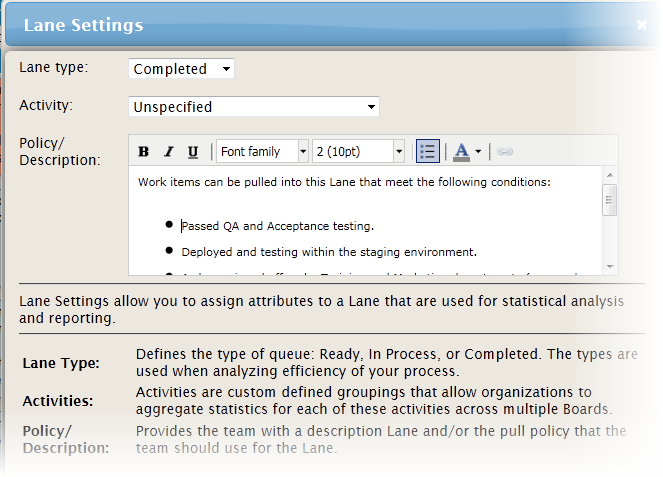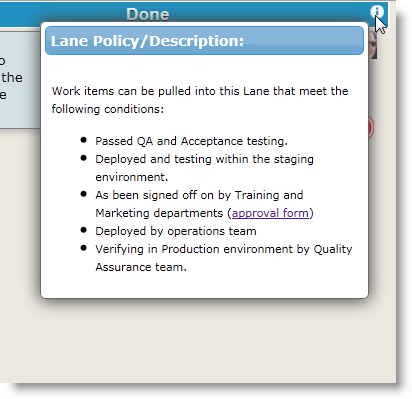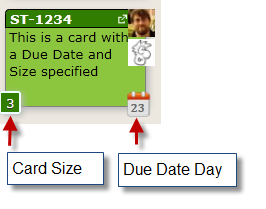
We are excited to announce a new set of features for our Team Edition based on ideas coming from our best source – you – our customers. We think you’ll agree that these features help move Kanban from the team level to the enterprise, while still retaining our trademark ease-of-use. And just wait ’til you see some of the things we have in the works for later this summer. We’ll knock your socks off!
Board Cloning
In many cases, our customers’ use of Planview AgilePlace starts with a single team or project. They figure out how to use Kanban and our tool with a team of ten or twelve and then they take it deeper into the organization. That’s great for them (and us!) but they’ve had a problem. As you would expect, during their pilots they learn lessons which they want to share with future teams, some of which involve the format of the board: lane formatting, card types, classes of service, etc. Or, in some cases, customers use some boards to represent short-lived projects (of which there are many) rather than teams. But again, they want each project board to represent their best-practice process. After all, Kanban is supposed to be about organizational learning. But, until now, in either case, that meant manually building new boards that mimic the old. We pride ourselves on making it easy to manage boards, but we know that was still a pain when adding ten new boards.
Now, an account administrator can create a new Kanban board by cloning an existing board, copying all its lane structure and card configuration. When creating a new board, he or she simply selects the copy board option, chooses the board to copy, and, presto, they have a new board with all the same configuration. Organizations can now take their hard fought lessons, codify them into template processes, and scale them out to numerous teams at once.

Lane Policies
We also discovered that many customers found that, while the idea of self-managing is great, in practice their teams needed some help in understanding the rules of the game. This was especially true for growing teams with new members or for resources who spread their time across multiple teams. As teams evolve their Kanban processes they can develop unwritten rules about how to work within the board. As time progresses and people come and go, some of this shared knowledge is inevitably lost.
To help with this problem, we now allow teams to define lane policies/descriptions (similar to Class of Service policies) so they can record and evolve explicit rules for how work in each lane should be done. For example, what is the team’s Definition of Done? As with other board configuration, this is quickly and easily done within the board editor with a WYSIWYG text-editor that even allows linking to longer policy documents stored elsewhere. All the board users then have the ability to quickly reference the lane policies by hovering over an icon on the lane header.


WIP Limits by Card Size
Although Lean/Agile best practices encourage us to divide work into similar-sized chunks, we all know this isn’t always possible. In these cases, WIP Limits based on a number of cards may not really limit the work in progress like we intend. It may not be obvious that work in the system is nearing or exceeding the team’s capacity. To solve this problem, we now allow you to define WIP limits in terms of card size. When the administrator selects this option, Planview AgilePlace will aggregate the total size of all the cards in a lane when validating its WIP limits. As before, this applies to lanes, sub-lanes, sub-lanes, etc. WIP limits roll-up whether calculated by number of cards or card size.
Visualization Improvements
Card Size – To support the use of WIP limits by card size, we’ve made it easier to visually manage these limits by adding an icon to cards showing their size number.
Due Date – Until now, if a card had a due date, the calendar icon that appeared on the card had a generic date. You might not have noticed since I’m sure you never miss a date :-), but the icon did change color as you approached and then passed the due date. And, you could hover over the icon to see the date. But the date didn’t jump out at you like it should. Well, now it does. The calendar icon shows the actual due date of the card.

Other Goodies
You can now exclude a board’s metrics from the Organization’s Dashboard metrics. This is useful when creating boards that don’t represent flow type processes (A SWOT analysis for example) or if you have boards that are sandboxes, templates, or training boards. Lastly, there is now a board setting that allows you to exclude the Archive and lanes set as a Completed when determining over-due work items and when calculating WIP limits for individuals.
And the iPad App – Is not quite ready. Darn. We are waiting patiently for Apple’s approval. We submitted over a month ago so it should be any day now. Maybe Steve Jobs wants to save our app for one of his big announcements!
Stephen Franklin
CTO and Co-Founder

![A Global Collaborative Work Management Blueprint [Video]](https://blog.planview.com/wp-content/uploads/2019/07/A-Global-Collaborative-Work-management-blueprint.png)


